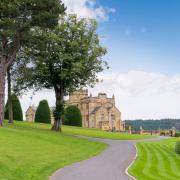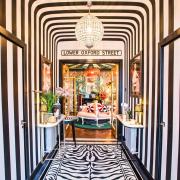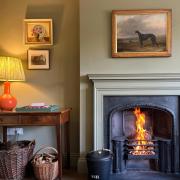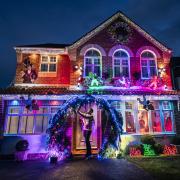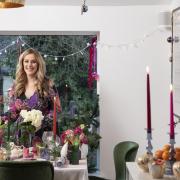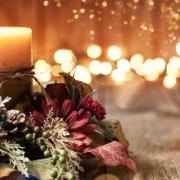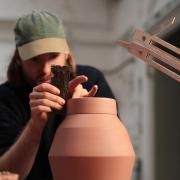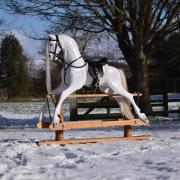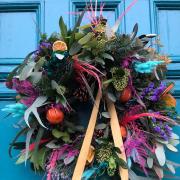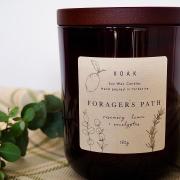A real tree in the house over the festive period is a must, says Martin Fish who gives tips on how to choose the best
The Christmas tree as we know it in Britain is a relatively new concept and before the fir tree was introduced people would decorate their homes with boughs of holly and other evergreen foliage. However, it wasn’t until the mid 1800s that the Christmas tree was introduced to us in England by none other than German born Prince Albert, husband of Queen Victoria, who cut a tree from the park and decorated it in Windsor Castle with candles, sweets and ribbons.
The tree he cut was a Norway spruce and a few years later in 1846 Queen Victoria and Prince Albert were featured in the Illustrated London News standing with their children around a highly decorated Christmas tree.The idea of having a fir tree in the house for Christmas very quickly caught on with wealthy families who covered their trees with elaborate decorations. Eventually Christmas trees became available to the working man and to this day most homes have a tree in the house for Christmas – although not necessarily a Norway spruce.
The Christmas tree as we know it in Britain is a relatively new concept and before the fir tree was introduced people would decorate their homes with boughs of holly and other evergreen foliage.
However, it wasn’t until the mid 1800s that the Christmas tree was introduced to us in England by none other than German born Prince Albert, husband of Queen Victoria, who cut a tree from the park and decorated it in Windsor Castle with candles, sweets and ribbons.
The tree he cut was a Norway spruce and a few years later in 1846 Queen Victoria and Prince Albert were featured in the Illustrated London News standing with their children around a highly decorated Christmas tree.The idea of having a fir tree in the house for Christmas very quickly caught on with wealthy families who covered their trees with elaborate decorations.
Eventually Christmas trees became available to the working man and to this day most homes have a tree in the house for Christmas – although not necessarily a Norway spruce.
The Norway spruce, traditionally used at Christmas, does tend to drop its needles, especially in warm centrally heated houses. However, there are now many other types of conifer that do the job just as well and tend to keep their needles and stay fresh for longer.
About seven million trees are sold each year in the UK and I’m pleased to say that more and more are being grown at home rather than imported.
Yorkshire plays its part in growing a range of different Christmas trees. They are much fresher than imported trees and vastly reduce transport costs. Locally grown trees not only create employment and diversification they are also good for wildlife and the environment.
The different varieties
Norway Spruce (Picea abies) During the mid 18th century the Norway spruce was extensively planted as a forest tree; its tops were used as Christmas trees. Its needles are pointed, short, with a mid green colour and a slight pine scent. The gently drooping branches give a conical shape. It does tend to droop if brought into the house too early.
Nordman Fir (Abies nordmannia) The Nordman was introduced into Britain in 1848 from Russia and is now the best selling Christmas tree. It has a good shape with soft, dark green flat needles, which have a slightly citrus scent. Often described as ‘non-drop’ and in most cases there is very little needle loss making it a popular choice.
Fraser Fir (fraseri) Fast becoming a popular choice in this country and has long been used in the eastern United States and originates in North Carolina and Virginia. The mid to dark green needles are soft, wide and flat. It has a dense, narrow habit and makes an attractive tree, with little needle drop.
Noble Fir (Abies procera) Introduced into Britain as a forest tree in the 1800s, this native of Washington is a very attractive tree for the house. The long needles are bluish grey and the tree has a dense habit. It also has good needle retention.
Lodgepole Pine (Pinus contorta var.latifolia) This pine originates from the Rocky Mountains where North American Indians apparently used the straight stems of the tree for their wigwams. The tree has a good shape with slightly twisted, yellow-green foliage and good needle retention.
Scots Pine (Pinus sylvestris) This is Britain’s only native pine that is now grown widely for its timber. However, young trees when trimmed make good shaped Christmas trees that have attractive blue-green needles that don’t tend to drop.
Top tree tips
Use a supplier who buys froma local sustainable source suchas a member of the British Christmas Tree Growers Association or the Forestry Commission as they both have an environmental code of practice.
Remove any netting and saw off the bottom couple of inchesof the trunk before standing the tree in water.
Keep the tree outside in a cool position until you want to bring it indoors.
Don’t be tempted to bring the tree into the house too soon before Christmas.
For minimum needle drop aim to have the tree in the house for no more than three weeks. Never allow the tree to dry once in the house.
Keep the tree away from a direct heat source.
Where to buy
Public sales on the 8,600 acre Dalby Forest, near Pickering, are held daily from December 1st-22nd 10am to 4pm. For more information contact Dalby Forest Visitor Centre, 01751 460295.
Yorkshire Christmas Trees, Halifax, 01274 834992Garrowby Estate, East Yorkshire, 01759 368587
Christmas Tree Farm, Leeds, 01977 515264Duncombe Park, Helmsley, 01439 771332
Stockeld Park, Wetherby, 01937 586101
Lowthorpe Estate, Driffield, 01377 254 324.
Bawtry Forest Christmas Trees, near Doncaster, 01302710465
And of course the many local garden centres that sell Yorkshire grown trees.
The print version of this article appeared in the December 2011 issue of Yorkshire Life
We can deliver a copy direct to your door – order online here



